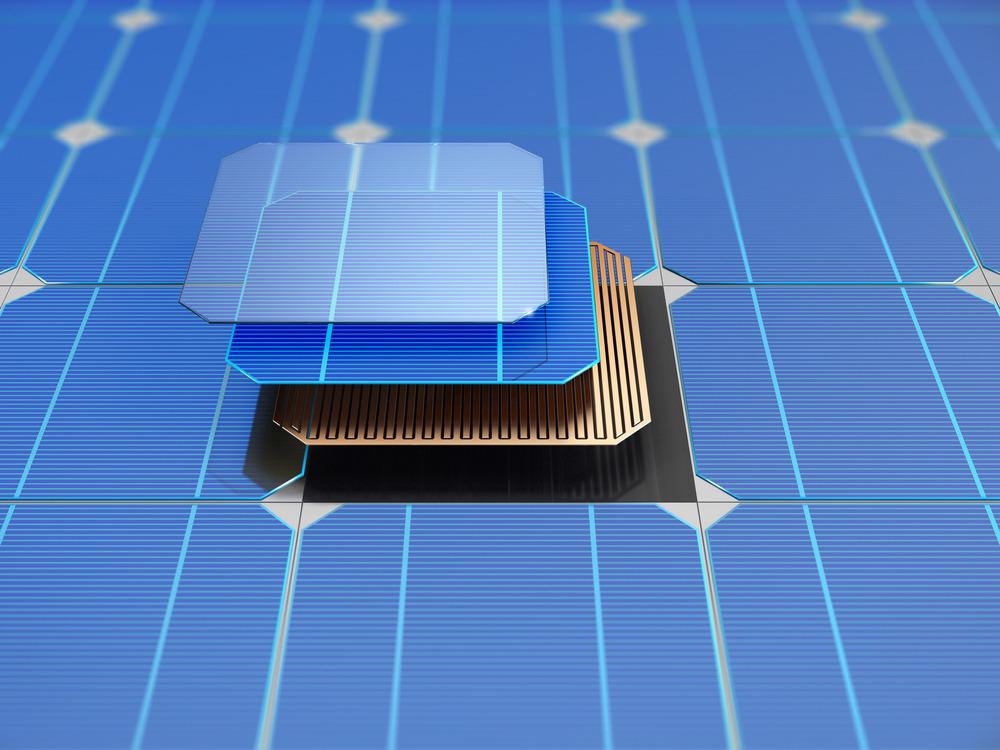Publishing in ACS Energy Letters, a team of researchers from the USA and China has demonstrated the rapid, economical synthesis of ceramic powders for use in perovskite solar cells using thermal shock.

Study: Synthesizing Functional Ceramic Powders for Solid Oxide Cells in Minutes through Thermal Shock. Image Credit: Iaremenko Sergii/Shutterstock.com
The novel synthesis method presented in the study has the potential to significantly reduce synthesis time for components of perovskite solar cells, a key technology in the drive toward net-zero carbon emissions.
All-Solid Electrochemical Devices
All-solid electrochemical devices have been widely explored in recent years as energy conversion devices due to their high efficiency and environmental friendliness. These devices consist of open porous ceramic electrodes and a dense, airtight membrane consisting of a ceramic electrolyte. Manufacturing these devices conventionally requires heating the ceramic powders in a furnace in a solid-state reaction.
Furnace-based calcination and sintering reactions typically take several hours at high temperatures to achieve the target phase due to kinetic limitations. Another drawback to conventional solid-state reactions is the furnace’s thermal inertia, with the heating and cooling rates generally slow (typically less than 20oC min-1.) This means that the process is a laborious, costly, and energy-intensive one, taking a large amount of time to achieve the desired ceramic powders.
Improving the Process
Numerous techniques have been proposed in recent years to improve the process of ceramic powder synthesis and reduce the time, cost, and energy demands. Proposed methods include microwave synthesis, spark plasma synthesis, and flash synthesis.
These methods can significantly reduce the time needed for synthesizing ceramic powder due to the enhancement of reaction kinetics. However, parallel experimentation with and analysis of different powder compositions in a high-throughput manner can prove challenging for researchers. These limitations have facilitated the need to find new synthesis methods that address the need to reduce synthesis time, costs, and energy demands whilst providing a high-throughput experimentation method.
The Study
One proposed method for improved ceramic powder synthesis for all-solid electrochemical devices that can be used for perovskite solar cells is a thermal shock technique. This novel technique has been investigated in the new research published online in ACS Energy Letters. The authors used the technique to rapidly screen and select ceramic materials for potential use in these devices.
The researchers used carbon felt as a disposable furnace. A low-cost material, carbon felt is easy to manufacture and is sustainable. The target ceramic powders were loaded into an easily prepared cavity of this novel disposable furnace which is the same size as the sample. To increase the contact surface area, the ceramic mixtures were compressed into a pellet. This also made the product easy to collect.
By applying a sufficiently high enough electrical current across the carbon felt, rapid heating was achieved, which caused thermal shock and drove the solid reaction. Thus, the target phase was reached at a fraction of the time it would take using a conventional furnace.
The authors have stated that the advantages of this method include low cost, extremely high heating and cooling rates, and flexibility of size, with the ability to tailor the size of the temporary carbon felt furnace. Using this technique, high-throughput analysis and experimentation with different mixtures of ceramic powders for use as all-solid electrochemical devices can be facilitated due to rapid calcination.
The team demonstrated the synthesis of functional ceramic electrolyte and electrode powders with different crystalline structures such as perovskite and fluoride structures for solid-oxide cells. This rapid synthesis method can therefore be used to analyze target materials in a high-throughput manner for applications such as solar energy harvesting. Materials were synthesized within 3 minutes.
More from AZoM: What is Femtosecond Laser-Based 3D Printing?
Investigating the Electrochemical Performance of Thermal-Shock Synthesized Powders
To demonstrate their potential for use in all-solid electrochemical devices, the prepared thermal-shock synthesized ceramic powder pellets were converted into printable ink. Solid oxide cells were then assembled using additive manufacturing. Subsequently, the authors investigated their electrochemical performance. The team drew several conclusions in the paper.
Results of the electrochemical performance investigations included a lower activation energy and improved electrocatalytic activity. Moreover, based on the results of their investigations, the authors concluded that the enhanced electrochemical kinetics were associated with the gas adsorption and dissociation process. The team also demonstrated that the electrochemical performance can be enhanced in situ by applying a further electrochemical voltage shock.
Impact of the Research
The novel thermal-shock induced ceramic powder synthesis method proposed by the authors vastly reduces the time and cost of fabricating functional ceramic powders for high-throughput analysis. Materials with a perovskite structure can be synthesized in under 3 minutes, with reasonable electrochemical performance. The authors have stated that this thermal-shock method opens the door to the discovery of new, improved functional ceramics for research.
Further Reading
Fan, W et al. (2022) Synthesizing Functional Ceramic Powders for Solid Oxide Cells in Minutes through Thermal Shock [online] ACS Energy Lett. 7 pp. 1223-1229 | pubs.acs.org. Available at: https://pubs.acs.org/doi/10.1021/acsenergylett.1c02630
Disclaimer: The views expressed here are those of the author expressed in their private capacity and do not necessarily represent the views of AZoM.com Limited T/A AZoNetwork the owner and operator of this website. This disclaimer forms part of the Terms and conditions of use of this website.